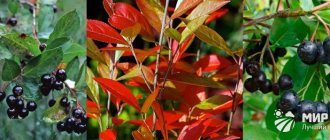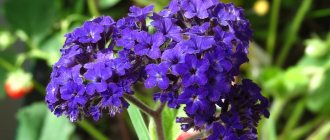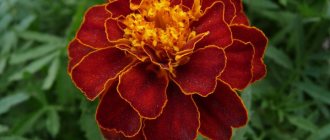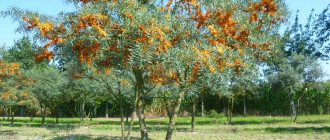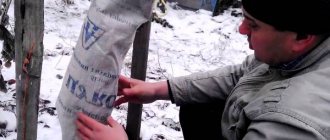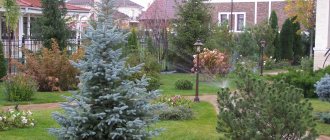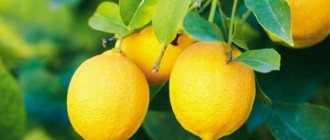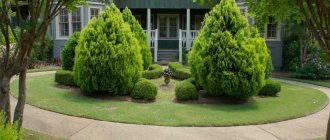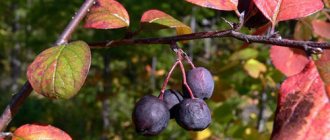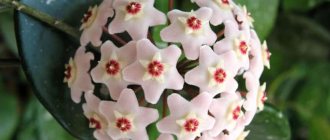Cardiovascular Health
Blood cells
A study using 300 mg of aronox (100 mg three times daily) for 2 months noted a decrease in lipid peroxidation in people with high cholesterol levels in 20 healthy subjects, as well as a subsequent increase in blood cell membrane fluidity, these properties were reproduced, and a decrease in lipid peroxidation according to TBARS reached 49%.
Pressure
A study in people with metabolic syndrome found that taking 300 mg (100 mg three times daily) of chokeberry reduced systolic and diastolic (by 8% and 6%, respectively) blood pressure after 2 months.
Lipoproteins and triglycerides
Taking 300 mg of Aronox daily (100 mg three times daily) for 2 months reduced cholesterol levels by 22% in people with high cholesterol, but the reduction was not significant in the healthy control group. Another study using the same dosage reported reductions in total cholesterol (6.1%), LDL-C (7.9%), and triglycerides (13.1%). Type II diabetics who received 200 ml of unsweetened chokeberry juice for 3 months saw a reduction in cholesterol levels of up to 21%, but had no effect on healthy controls. The study also noted a reduction in triglyceride levels (41%) in diabetics, a figure significantly higher than in the aforementioned studies on high cholesterol and metabolic syndrome. Suggested to lower cholesterol levels in people with diabetes, but the degree of reduction varies between studies; does not have a significant effect on healthy people.
Application
Decorative heather care and cultivation, the best varieties
Sheet. Autumn color
It is rarely found in cultivation and is sometimes even destroyed as a difficult to eradicate weed. Edible chokeberry, as a large-fruited chokeberry, began to be grown for the first time. As a result of numerous, he received a new plant with larger edible fruits and other [ what?
] set, which, therefore, was no longer chokeberry. In cultivation, varieties 2-4 meters tall are usually grown.
For preventive and medicinal purposes, not only fresh, frozen and dried fruits are used, but also processed products that have the best taste: , , , , , .
The flowers produce pollen and secrete pollen and are well visited by bees.
Necessary conditions for growing chokeberry
Next, we will analyze the conditions that will ensure proper care and cultivation of chokeberry. But first, let’s look a little at the history of the origin and spread of this shrub in Russian spaces.
This plant arose as a result of crossing the classic rowan and chokeberry. Chokeberry, a relative of our mountain ash, grows in marshy areas and on the wide North American hills.
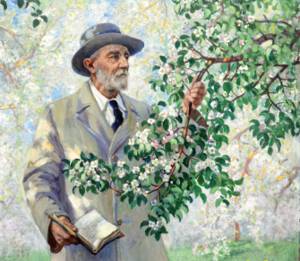
I. V. Michurin
Externally, chokeberry looks like a modest low bush that is not conspicuous. Chokeberry has become popular among domestic gardeners thanks to the work of the Russian geneticist I.V. Michurin. The scientist had to conduct many experiments in order to develop a new culture.
Such characteristics of the shrub as frost resistance, resistance to changes in the harsh domestic climate and general not pickyness to environmental conditions have contributed to the spread of this type of mountain ash over a large area.
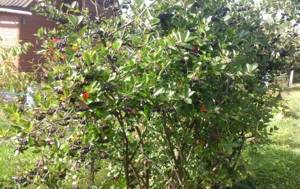
The best condition for growing shrubs is a well-consecrated place: in such conditions, rowan will grow well and give a rich harvest. In the shade, planting and caring for chokeberry is also possible, but the volume of the harvest in such conditions will be somewhat reduced.
Due to the fact that the root system of rowan is not too deep (the rods are no more than two meters long, while the total mass of the rhizome and its branches lies no deeper than 60 centimeters), lowlands with a groundwater level of about two meters are best suited for the successful growth of the bush.
If the soil is not sufficiently moistened, the fertility of the bush and its resistance to frost are reduced. The not picky plant is suitable for different types of soil: forest, sod-podzolic, black soil or dried peat bogs.
Rocky, saline or waterlogged soils are completely unsuitable for this bush. It can be planted to secure a ravine or planted along the perimeter of the site.
When to collect chokeberry
Aronia Rowan chokeberry
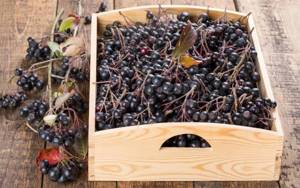
The ripening of chokeberry berries begins in August and ends with the first frost, when the berries finally lose their tart taste and become sweet. When chokeberry berries are used as an auxiliary product in preparations, to give color, for example, or a fragrant aroma, then the collection can begin already unripe in September. But if you plan to use chokeberry fruits as a one-component product, then you should harvest them at the end of November.
Picking the berries, despite their small size, is not difficult, since they grow in clusters and are cut in whole clusters. This method of harvesting helps the tree recover faster and rid the branches of the source of infection - rotten berries missed during a single harvest.
Chokeberries for jam or wine are separated from the stalk, sorted, sorted, rinsed and processed as quickly as possible in order to preserve all their usefulness.
Before picking, try several berries from different sides of the bush; if the berries are juicy, sweet and moderately tart, then you can cut off the fruiting clusters; if the taste is bitter, leave the berries on the branches until the first frost.
Medicinal properties of chokeberry
The beneficial properties of chokeberry for the human body have long been known. We will take a closer look at this type of chokeberry later, but for now let’s talk about its meaning for humans.
Chokeberry fruits contain many useful substances - vitamins (for example P), catechins, pectin and tannins, sucrose, and trace elements. From the collected berries you can make jam, wine, infuse them with alcohol, dry or freeze them.
It is recommended to use the fruits for everyone who has fragile blood vessels, is susceptible to hypertension, skin diseases, and suffers from thyroid damage. Helps in the treatment of scarlet fever, measles.
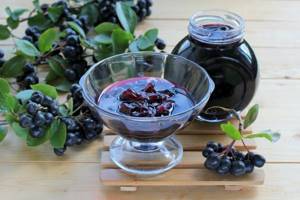
Chokeberry is good both in the prevention and treatment of ailments. It increases the body's resistance, removes harmful toxins and metals. Freshly squeezed berry juice helps heal wounds and burns. Aronia chokeberry gives vigor and strength.
Contraindications for the use of black rowan products are as follows: thrombosis, hypertension, gastritis, angina pectoris, duodenal ulcer. Before use, you should consult your doctor.
Types of chokeberry
Under natural conditions, two types of chokeberry previously grew, then two more hybrids appeared.
Aronia chokeberry
Chokeberry (Arónia melanocárpa) is a famous plant that came to us from North America. A small tree with many trunks, the leaves are rich green and oval shaped. After the fragrant thyroid inflorescences bloom, the berries ripen by the end of summer (weighing no more than 1 gram each), we have already talked about their benefits.
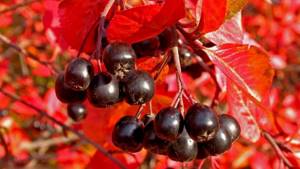
Blackberry varieties:
- Hugin – leaves are green in summer, burgundy in autumn, black berries, rounded crown, height up to 2 m;
- Viking - shoots are located perpendicular to the ground, the berries are black and red, flattened, with teeth, oblong;
- nero - the fruits are quite large, the variety is frost-resistant, prefers shade.
Aronia arbutifolia
Aronia arbutifolia - red chokeberry. It grows up to 4 meters in height, the shoots diverge in different directions. The leaf size is no more than 8 cm in length. On the thyroid inflorescences there are buds with a diameter of up to 10 mm. Red fruits (size 5-10 mm) ripen in early autumn and stay on the branches all winter.
Aronia Michurina
Chokeberry Michurina (Arónia mitschurínii) is a hybrid variety bred by the world famous biologist Ivan Michurin. Its chokeberry is distinguished by its generous fruit harvest. The flowers are a melliferous crop, and the berries contain useful chemical compounds.
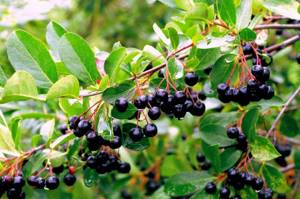
Chokeberry Michurina blooms somewhat later than its counterparts; the fruits ripen from September until frost. Prefers well-loosened soil and sunny places. One plant bush can produce up to 9 kg of berries.
How to care for chokeberry in the garden
Caring for chokeberry in spring
Ficus domestica - photo, care, reproduction, transplantation, pruning
In the 20th of March or early April, spring work with chokeberry begins. It is during these months that the bush needs pruning: both sanitary and formative, and it is also advisable for the tree to treat all the trunks with lime. At the beginning of April, the chokeberry bush needs to be prevented from various diseases and harmful insects, because they can be found in cracks in the bark and in the very soil of the tree. With the onset of May, weeds will appear; they must be removed immediately so that they do not grow. During the spring months, chokeberry needs to be fed with nitrogen fertilizers.
Summer care for chokeberry
In the summer season, you need to take care of chokeberry very carefully, because it is at this time that harmful insects appear and any plant in the garden or garden needs careful daily inspection
It is important to prevent the plant from becoming sick and harmful bugs appearing on it. If, after all, the tree is infected, you need to immediately treat it with chemical compounds.
Since such a tree can easily tolerate heat and can grow in dry soil, this does not mean that it does not need to be watered. After watering, the chokeberry bush needs loosening and weeding.
Caring for chokeberry in autumn
Its berries ripen in the 20th of August, but experienced gardeners advise picking the fruits only when the first frost occurs. When the dormant period begins, it needs to undergo sanitary pruning and pest control. If a young tree needs to be spudded and covered with spruce branches, adult chokeberries do not need shelter.
Processing chokeberry
Preventive treatments against insects and diseases should be carried out in early March before the buds begin to bloom. Chokeberry should be sprayed with 1% Bordeaux mixture. And in the autumn months, when leaf fall is completely over, you also need to do preventive treatment.
Watering chokeberry
At the beginning of the growing season, watering is important, especially in the summer season in the sultry heat if there is no rain. Another important stage in the tree's period is the formation of berries. For one chokeberry tree - three buckets of water. As soon as the moisture is absorbed into the ground, you can begin to loosen the area. The very first time the soil needs to be loosened in early March, and then about five times in the summer
It is also especially important to loosen the soil next to the chokeberry as soon as you have harvested the entire crop, and mulch the area with manure
How to plant chokeberry
Errors made when choosing a time or place, insufficient soil preparation, or improper placement of chokeberry seedlings in the soil may not have an immediate impact. Correcting such defects can be difficult.
For successful cultivation of chokeberry, the main requirement for the planting site is sufficient lighting. Chokeberry lays fruit buds along the entire periphery of the bush; for full flowering and uniform growth, a lot of sunlight is needed. Even partial shading has a bad effect on the decorative effect of black rowan.
Self-pollinating black chokeberry is able to bloom and bear fruit in single plantings. And yet, proximity to related crops (for example, red rowan) has a beneficial effect on productivity. The ability of chokeberry to tolerate pruning well and grow in dense groups is used when creating free-form hedges.
Where to plant chokeberry
The unpretentious chokeberry can take root in a variety of soils. It grows on sandy, rocky slopes, and in wetlands. But still, the best results are obtained by growing chokeberries on well-drained loams with low acidity. Loose fertile soil and a sunny place are the best choice for chokeberry.
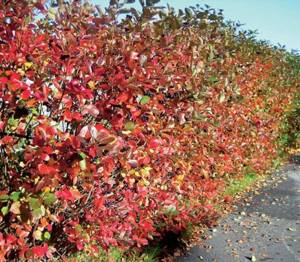
The bulk of the root system of black rowan lies no deeper than 50 cm. It is not afraid of spring flooding. Groundwater that comes close to the surface does not cause any harm to black chokeberry.
Advice! Seedlings should be protected from cold winds. Mature chokeberry plants themselves will serve as a shield for the garden. You can plant chokeberry along the edge of the plot on the leeward side. When creating protection in the fields, chokeberry is used to fill the middle tier of the forest belt.
When to plant chokeberry
Early spring is suitable for planting chokeberry. When choosing dates, pay attention to the climatic conditions in a particular area: the duration of the warm period, the severity of the climate, the presence of recurrent frosts.
Healthy chokeberry planting material for spring work should have swollen, living buds, but still without leaves. Chokeberry should be planted in the spring after the soil has completely thawed. It is advisable to complete the work before the active growing season begins. Most often this period is observed in April. Planting in the spring gives young black chokeberries a full season to actively grow before going into winter.
Sudden cold snaps in spring are dangerous for young shoots. When there is a threat of return frosts in the spring, black chokeberry seedlings are covered.
How to plant chokeberry correctly
The planting site, as well as the nutrient substrate for the roots, is prepared in advance. The minimum pit size for a chokeberry seedling is 50 cm in width and depth. Even if the rowan roots are small, the place is prepared as standard. The entire volume of the planting pit will be used by the chokeberry during the growth of the bush.
The soil removed when digging a hole is mixed with humus (10 kg), wood ash (about 2 tbsp.) and 1 tbsp. superphosphate. Seats are located at a distance of 3 m from each other. When forming a hedge from black rowan, a slight thickening is permissible, but not closer than 2 m.
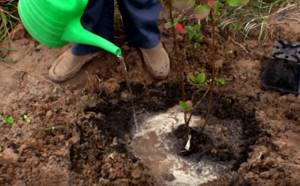
The process of planting chokeberry step by step:
- The planting hole is filled 1/3 with the prepared nutrient substrate.
- Spray with well-settled water and wait until it is completely absorbed into the soil.
- The chokeberry seedling is placed in the center of the hole so that after planting the root collar is above the soil.
- The hole is completely filled with fertile substrate, and the soil is pressed around the seedling.
- The chokeberry planting site is watered abundantly. After the soil has settled, it is mulched with a layer of about 2 cm.
Comment! Before planting black rowan, the shoots on the seedling are shortened to 5 living buds. This will make rooting easier, and the plant will more readily begin to grow.
What can be planted next to chokeberry
An important factor when choosing a neighborhood for chokeberry is the height of the plants. The chokeberry's requirement for light requires care that surrounding trees and bushes do not shade it even partially.
So, when planting chokeberry and red rowan next to each other, the first one is placed further south. She finds it harder to bear the shadow of her tall relative. Any types of wild and cultivated varieties of rowan get along well side by side and benefit from cross-pollination.
Black chokeberry easily tolerates any neighborhood in the garden. It is not planted only near cherries, due to the presence of pests (aphids and sawflies) that attack both plants. Other garden trees and shrubs tolerate planting well next to chokeberry.
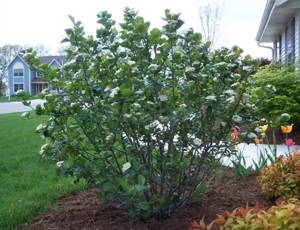
Garden crops also have no contraindications for growing in the same area as chokeberry. However, sometimes there is mutual infestation of aphids in chokeberries with berry crops: strawberries, raspberries, currants.
Is it possible to plant chokeberry near an apple tree?
The apple tree is one of the most tolerant trees in the garden. Like chokeberry, it is undemanding to its neighbors. Joint planting can be beneficial for both crops, provided they do not shade each other.
By leaving some of the black berries on the chokeberry, birds are attracted to the garden. Such natural destruction of pests benefits the apple tree. Preventive treatments of crops against diseases can be carried out together, at the same time, with the same preparations. Therefore, the proximity of black rowan and apple trees can be called successful.
Planting chokeberry seedlings
In the selected area, if necessary, the soil should be fertilized and cultivated in advance (preferably in the fall). Before planting, holes of approximately 40x40x40 cm in size need to be made in the designated areas.
Next, a mixture of organic matter and mineral fertilizers should be added to the pits. To prepare it you need the following components:
- — 10 kg of compost or humus;
- -100-150 g of superphosphate;
- — 50-70 g of potash fertilizers.
It is allowed to use increased rates of mineral fertilizers - up to 300 g of superphosphate and up to 200 g of potassium salt. Increasing fertilizer rates, in particular, is recommended for depleted, low-fertility soils.
Before planting, it is recommended to dip the roots of the seedlings in humus, earthen or peat mash. Some gardeners, before planting, soak the roots of young plants for several hours in a solution that activates root formation (root).
When planting seedlings, it is not recommended to bury their root collar so as not to stimulate the active formation of root shoots. However, if the gardener plans to grow chokeberry bushes with a wide base, when planting, the seedlings can be buried 3-4 cm below the root collar. The planted plants are generously watered and the tree trunk circle is sprinkled with mulch.
Care after landing
The shrub's maintenance requirements are minimal. In addition, it is rarely affected by pests and diseases . This makes it especially attractive for growing in the country, where the presence of a gardener is not constant.
Shelter for the winter
A seedling planted in the fall needs to be prepared for the first winter season. To do this, it is bent to the ground and pressed with boards . It is important to do this until the air temperature drops to -1°C—2°C.
Otherwise, the stem of the bush will lose elasticity and may break. When bending the bush, it is important to ensure that the height of the arc does not exceed 20 -30 cm .
Additionally, the seedling is covered with spruce branches , and the layer of mulch is made higher. In winters with little snow, the bush is covered with snow.
In the spring, when a stable temperature has established, the plant needs to be straightened. If you keep it bent down for a long time, the apical shoots can prop up.
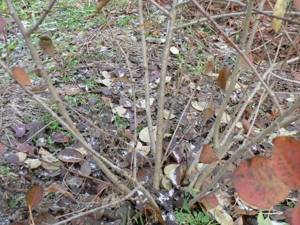
A chokeberry seedling is bent to the ground and pressed, covered with spruce branches
Do shoots need to be trimmed?
A feature of chokeberry is the rapid formation of shoots, which leads to a strong thickening of the crown. Therefore, the root shoots of young bushes are removed annually, leaving only 5-6 that are stronger and growing in the right direction.
For the correct balance between stability and yield, an adult shrub should have 30-50 strong trunks .
Sanitary pruning involves removing old, rotten and bare branches. The shrub lays fruit buds on annual shoots, so they should not be shortened.
To increase the productivity and life expectancy of the shrub, rejuvenating pruning should be done every 3-4 years . During the procedure, chokeberry shoots are shortened by half their height.
Top dressing
Chokeberry responds well to fertilizing, which should be done twice a year . To do this, the following must be embedded into the tree trunk circle per 1 m2:
- ammonium nitrate 20 g (in spring);
- potassium salt 20 g, superphosphate 30 g (autumn).
Good results are obtained by foliar feeding of the bush after flowering , when the fruits begin to set. To do this, it is sprayed with an aqueous solution of urea (20g/10l).
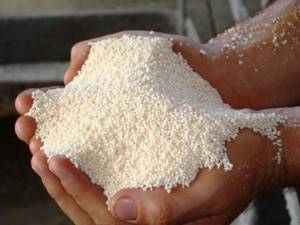
Chokeberry responds well to fertilizing, which should be done twice a year.
With the accumulation of excessive amounts of nitrogen, the growth and duration of formation of root shoots increases. In young shoots, the bark does not have time to become lignified and the apical bud does not form.
This leads to severe freezing even in the most favorable winter. Therefore, nitrogen fertilizing should not be done in the second half of the growing season .
Watering and loosening the soil
Chokeberry is a moisture-loving crop . Watering is especially important for it at the beginning of the growing season and during fruit formation.
In persistent hot weather, the bush is watered every week. The water requirement for an adult shrub is 30 liters .
To do this, you can make watering furrows at a distance of 30-40 cm from the trunks of the bush. With this method, water will penetrate to all the roots of the plant.
Twice a season it is necessary to loosen the soil in the tree trunk circle, while removing weeds. The autumn procedure is especially important.
Excessive soil compaction contributes to severe freezing of the soil in the root layers, which significantly reduces the winter hardiness of the shrub.
Aronia chokeberry chokeberry planting and care, pruning and propagation
Grafting can be done both in winter (carrying out this procedure on rootstocks dug out of the ground) and in early spring, during the first sap flow (in open ground). I prefer the second method, and the survival rate in this case is higher.
The grafting is carried out using the method of improved copulation, leaving 3-4 buds on the scion cuttings.
Isolate the cutting with plastic tape. Usually after a few days the buds awaken, and young growths appear and actively grow
It is important to remove the harness in time in order to prevent constrictions, and install a support peg that will prevent the fragile stem from breaking from a gust of wind
In the future, you need to monitor the plant - remove weeds in the tree trunk circle and tidy up the crown, removing shoots that thicken it, as well as dried and diseased ones.
Chokeberry and serviceberry on a trunk.
These crops are good because they do not require any support at all, they do not need unsightly pegs, the rootstock (rowan), and therefore the standard, are very resistant to gusts of wind of almost any intensity. The only drawback of such plants is the formation of root shoots, which will have to be removed annually. Rowan is used as a rootstock for both of these crops. Rootstocks are grown from seeds and can be grafted in the 4th year. Grafting is carried out in early spring, during the period of active sap flow, by cuttings using the method of improved copulation. The survival rate, as a rule, is close to 100%, and the growth activity is so high that already in the year of grafting you will receive the first fruits!
As in the case of currants, it is important to remove the film in a timely manner, and when the shoots begin to grow, you will need to monitor the crown: in serviceberry, for example, it thickens very quickly, which can lead to the transfer of the yield to the periphery and its reduction, but chokeberry in this regard, it is more “calm”; thinning the crown can begin in the fourth or fifth year from the start of shoot growth. From the editor
In the southern regions, plants on trunks grow quite successfully, but in the middle zone and especially to the north you need to treat this formation with caution. As you know, in winter the coldest air is at the surface of the snow, and the grafting may be right at this height. From the editor
In the southern regions, plants on trunks grow quite successfully, but in the middle zone and especially to the north you need to treat this formation with caution. As you know, in winter the coldest air is at the surface of the snow, and the grafting may be right at this height
From the editor
In the southern regions, plants on trunks grow quite successfully, but in the middle zone and especially to the north you need to treat this formation with caution. As you know, in winter the coldest air is at the surface of the snow, and the grafting may be right at this height
Let's say, in the Moscow region in January the average height of the cover is about 50 cm. It is desirable that the crown of the standard plant be no lower than half a meter from the snow surface. Therefore, when grafting, place it at a height of 1-1.2 m from the ground. In other regions, the grafting height may vary.
In some places the plants may need shelter, in others they may need to be hunkered down for the winter. In a word, this forming method is still waiting for its test gardeners.
I. GURIEVA All-Russian Scientific Research Institute of Horticulture named after. I.V.Michurina, Michurinsk
Pruning chokeberry
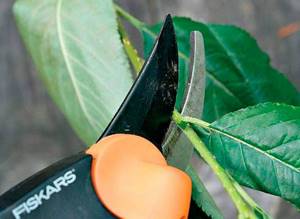
If you do not prune chokeberry, the height and diameter of its crown will increase noticeably, which will lead to fruiting moving to the periphery, which is well lit, while in the middle of the plant there will be barren jungle
In order to avoid this, it is necessary to pay special attention to adjusting the height of the bush and the number of its branches. The plant needs to be pruned in spring.
Pruning chokeberry in spring
In the first spring, seedlings planted in open soil must be cut to a height of 15 to 20 centimeters. After 1 year, the plant should have shoots, from which only a few powerful branches should be selected, and they should be equalized in height. The growth that remains must be cut to the ground. After another 1 year, a few more branches should be added to the bush from the newly grown shoots, and they are again leveled in height. Every year, several branches must be added from the grown shoots. After there are about 10 such branches, the formation of the chokeberry bush should be completed.
Then you will need to regularly thin out the crown so that it does not thicken, since sunlight must penetrate even into the very thick of the plant. The fact is that the formation of flower buds, and therefore the setting of fruits, occurs only where the rays of the sun penetrate. Thinning pruning, as a rule, is carried out in conjunction with sanitary pruning; for this it is necessary to remove all branches and stems that compete with each other, grow inward, are of little value, and are also dried out, injured and affected by disease.
The branches of such a plant bear fruit well until they reach eight years of age. An older branch should be cut out, and in its place it is necessary to leave 1 well-developed shoot, which is selected from the root shoots. Try to replace 2 or 3 branches every year, but remember that you should avoid increasing the diameter of the base of the plant. Try to cut the old branch almost flush with the ground surface. In this case, there is very little chance that pathogenic microorganisms or pests will settle in the hemp.
Once you notice that the plant looks tired and aged, it will need anti-aging pruning; for this you need to cut out absolutely all the branches. When young basal shoots appear, you should begin to form the bush again in the same way as described in detail above.
Pruning chokeberry in autumn
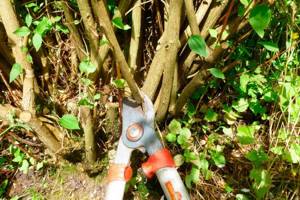
In autumn, sanitary pruning is carried out only as a last resort. For example, if many branches or stems were injured during berry picking, or if you noticed branches damaged by disease or pests. In this case, pruning the chokeberry is simply necessary. The stems that thicken the crown can be cut at any time of the year, except winter, this will make the bush stronger. However, remember that only in spring is formative and rejuvenating pruning done. After any pruning, the cut areas of thick branches must be coated with garden varnish.
Rules for further care and cultivation of chokeberry
Due to the fact that the shrub is not picky, it does not require much attention. The peculiarity of the shrub is that it is rarely affected by pathogens and insects. Thanks to these characteristics, rowan is increasingly being planted by summer residents who do not have much time for regular visits to their dacha.
Sheltering chokeberry from frost
A shrub planted in autumn requires obligatory shelter. To do this, just bend the branches closer to the soil and press them on top with wooden boards. This must be done until the soil temperature drops to -1°C-2°C, otherwise the stem will no longer be elastic and may break.
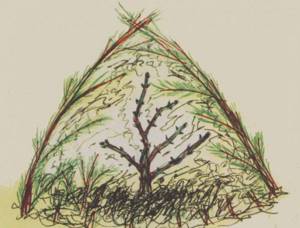
Plant shelter scheme for the winter
The resulting arc should not have a height of more than 30 centimeters. In addition to these procedures, gardeners actively use spruce branches for shelter, and mulch also increases. After the frosts have passed and the overall temperature has become relatively stable, the seedling must be returned to its original form.
Proper planting and care of chokeberry
Overgrowing of rowan will also affect its yield. Young shoots need to be dug up annually.
If several plants are planted on a site, the minimum distance between them should be two meters, otherwise the bushes will simply interfere with each other and be shaded.
After the end of the flowering period, the bush can be pruned, thus forming its crown.
Branches and shoots that thicken the bush must be pruned.
In seven-year-old rowan trees, the old branches are completely removed, leaving young replacement shoots, thus the bush is rejuvenated.
A ten-year-old rowan tree can be cut down to the ground without fear. The bush will rejuvenate and begin to produce good harvests again.
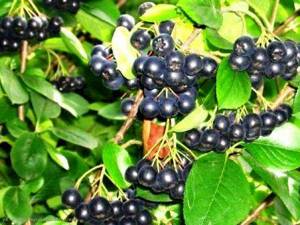
Chokeberry care
Chokeberry is considered one of the least demanding garden crops. However, proper care of chokeberry is necessary - this allows for timely, abundant harvests.
The main conditions for proper care of chokeberry are:
- - regular watering;
- — good illumination of plants;
- - periodic feeding;
- — pruning and timely cutting of old and thickening branches;
- — disease prevention and pest protection.
Watering
In dry, arid summers, chokeberry is watered once every 2-3 weeks. After each watering, it is advisable to sprinkle the tree trunk circles with mulch to retain moisture. It is recommended to water the chokeberry abundantly (to a depth of about 30 cm) at the beginning of the growing season and in the fruiting phase. At the same time, do not forget to loosen the soil under each bush - to a depth of 6-8 cm. Loosening should be carried out carefully so as not to touch the shallow roots.
Illumination
Good illumination of plants is ensured by timely removal of excess branches. A competent choice of planting site is also important - it is advisable that the bushes be removed from tall objects that cast shadows - fences, outbuildings, film and glass greenhouses.
Feeding
In spring, chokeberry bushes can be fed with urea. The same feeding is recommended both after flowering and at the very beginning of fruit formation. About 100 g of urea is added to each adult plant.
Potassium and phosphorus fertilizing is carried out once every 2-3 years in the autumn or spring season. The recommended norm is 120 potassium-containing and 60 g phosphorus-containing substances per bush.
In the absence of urea, spring or autumn fertilizing can be carried out using the following mixture (the number of components is given per 1 square meter of crown projection):
- — 0.5 buckets of compost or humus;
- - 40 g of superphosphate;
- - 1 tbsp. ash.
It must be remembered that you cannot overfeed the plants - this leads to smaller fruits and a decrease in yield.
Trimming
In addition to fertilizing and watering, caring for chokeberries involves regular pruning. In the spring, sanitary pruning is carried out, removing old and frost-damaged branches. They also destroy excess growth. Every year, in one bush, from the entire volume of young shoots, from 3 to 5 of the strongest and most developed basal shoots are left to replace the cut out old branches.
If after a cold winter the above-ground part of the plant is frozen, it must be trimmed as much as possible, down to healthy living wood (almost at ground level). From the young root shoots that appear after such pruning, you can form a full-fledged bush within two years and restore fruiting.
Prune the bushes in March-April before the buds open. Formation during pruning is carried out in such a way that the bush consists of 30-40 stems of different ages.
Anti-aging pruning is recommended for old bushes. It is recommended to completely rejuvenate the plants every 10 years. With this procedure, mature bushes are pruned to a height of 1-1.2 m, which restores their productive abilities.
Pruning already fruit-bearing bushes comes down only to removing unproductive branches at the age of 7 or more years and replacing them with the same number of young basal shoots. The skeletal trunk must also be cut down to the ground when it reaches 5-7 years of age.
Diseases and pests
“Chokeberry” is not only one of the unpretentious, but also quite resistant crops in relation to pests and diseases. Its main enemies are brown leaf spot and cherry slimy sawfly larvae. Treatment of bushes with fungicidal preparations helps to cope with spotting, and treatment with entobacterin helps with sawfly larvae.
How to grow chokeberry
Black chokeberry is tolerant of frost and drought and can grow independently without special attention. But truly gorgeous bushes and an abundance of berries are obtained by gardeners who follow the necessary agricultural practices. Regular pruning of chokeberry, weeding, loosening, several waterings per season, a little fertilizing is all that is required for the normal development of the crop.
How to prune chokeberry
The first formation is required by the chokeberry during planting. The branches are shortened to reduce the load on the root system and to give the black chokeberry bushes the required shape in the future. The position of the last bud on the stem determines the direction of growth of future shoots.
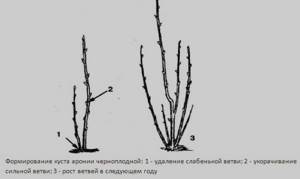
Important! The rules for pruning vigorous crops require mandatory thinning of the crown and removal of shoots growing inside the bush.
An adult, well-formed chokeberry consists of 10–12 skeletal branches. Rejuvenation of the plant, replacing old shoots with young shoots, begins at the 8th year of chokeberry life. Even a weakened, thickened chokeberry can be brought back to life. Bushes completely cut to the ground are restored within a season. Black berries will appear on such chokeberries in a year.
The main work on pruning chokeberry is carried out in early spring. All old, cracked, dried branches must be removed. Chokeberry lends itself well to shaping: in a few years it can be given the appearance of a spherical bush or miniature tree.
It should be remembered that black rowan plants the next year's harvest at the tips of the branches. Therefore, when cutting off the tops of the shoots, you should accept a temporary loss of yield.
How can you feed chokeberry?
Spring work on caring for chokeberries can be started by applying nitrogen fertilizers to the tree trunk. Chokeberry responds well to both organic and mineral compounds.
Re-fertilize rowan during or after flowering. Potassium preparations and pollination with ash are preferred for chokeberry. The third top dressing may consist of a mixture of phosphorus and potassium complex fertilizers. It is important not to fertilize chokeberry with nitrogen from the second half of summer. Even manure applied late can slow down the preparation of branches and lead to freezing of non-lignified shoots.
Rules for proper watering
Viable chokeberry, when planted and cared for in open ground, can go for a long time without watering. More often than not, rainfall is sufficient for a resilient crop to survive. But luxurious flowering, bright foliage and an abundance of black fruits can only be achieved by abundantly moistening the chokeberry at the following times:
- in early spring, if there is little melted snow and insufficient precipitation, the first deep watering is carried out;
- in the summer, if the fruit-filling period coincides with dry times, the chokeberry is watered a second time.
The bulk of the roots of chokeberry lie shallow, however, each plant requires at least 40 liters of water for proper watering.
Mulching and loosening the soil
Watering can be combined with feeding chokeberry and weeding. The moistened soil is loosened and covered with a layer of mulch. A layer of herbaceous residues (without seeds) protects the soil from drying out, and also significantly reduces the time spent on subsequent loosening and weeding around the chokeberry.
Important! It is impossible to dig up tree trunk circles around black chokeberry. Loosening is carried out to a depth of no more than 10 cm.
Biology
To start growing, chokeberry needs warmth. In the conditions of the Novosibirsk region, chokeberry begins to open growth buds in early May. The average start of the growing season, according to the observations of Christ A. (1973), is May 7 (from April 26 to May 13).
Chokeberry blooms within a month (from May 25 to June 11), and lasts an average of 9 days (sometimes up to 15 days). This late flowering reduces the likelihood of flowers dying from returning spring frosts.
The growth of chokeberry shoots is very vigorous and ends by the beginning of August. The fruits ripen in September, in warm years - at the beginning and in cold years - in the middle of the month.
Leaf fall begins in late September - early October and ends by mid-October. Usually the leaves always fall off. The average length of the growing season is 168 days. According to the rhythm of development, chokeberry can withstand the climatic conditions of Western Siberia well.
In summer, chokeberry is not very demanding of a lot of heat. However, in warmer years the berries have better taste. Since plants are not very demanding of heat in the summer, they can tolerate light shading. But it must be borne in mind that the warmer the climate, the more shading the plant can withstand and vice versa - in places where summers are usually colder and shorter, it needs to be allocated a sunny place.
Michurin recommended that when growing rowan, even in the northern regions of the European part of our country, it is necessary to cover the entire plant with snow in winter, since chokeberry does not have high frost resistance.
Chokeberry plants are similar in frost resistance to raspberries and gooseberries. If you leave a mountain ash without snow cover, its branches often freeze or die completely. If the plants are bent down in advance in the fall and covered with snow, then they winter well and produce high yields in all regions of Siberia. It should be taken into account that low temperatures can damage not only the above-ground part of the plant, but also its root system. It is necessary to ensure that the first snow covers the ground with as thick a layer as possible.
As Vasilchenko (1967) points out, in the Altai Territory, the roots of chokeberry are damaged when the soil temperature drops to minus 11°, while the shoots in December - February are able to withstand frosts down to minus 30-36°, in October (in preparation for in winter) - up to minus 23°.
Long-term observations of the Novosibirsk fruit and berry experimental station also showed that one of the main conditions for growing chokeberry in Siberia is bending the shoots to the ground. This should be done as early as possible (in October), and then cover them with snow. In places where snow is blown away, it is necessary to delay it, and this work should begin before the first snowfalls.
Chokeberry responds positively to precipitation during the growing season. It is difficult to tolerate soil and air drought. With a lack of moisture, the shoots grow weakly, the fruits form small with hard pulp, and their taste deteriorates. It is good to grow this crop in fairly moist forest-steppe and forest areas. The increased humidity of the soil and especially the air, characteristic of forest clearings, compensates for some moisture deficit that is created in the summer with uneven precipitation.
According to the observations of Vasilchenko and Protsenko (1967), the most favorable conditions for chokeberry are created in the foothill zone of the Altai Territory, where 500 - 600 mm of precipitation falls, a lot of heat and good snow cover.
Planting a chokeberry seedling
Chokeberry is grown most often as seedlings. You should be aware of some points so that the expected result does not disappoint.
Selection of seedlings
It is advisable to purchase seedlings from nurseries or from trusted producers, and always varieties adapted to the climate of the region. It is possible to purchase a seedling from a mother bush on a neighboring plot.
Which seedlings to choose:
- age – 1-2 years;
- stem 1-1.3 m high;
- the presence of 2-3 elastic roots 20-25 cm long and many overgrowing roots;
- there should be no damage or signs of disease;
- the cut of the bark should have a greenish color;
- dry roots indicate disease or drying of the tree.
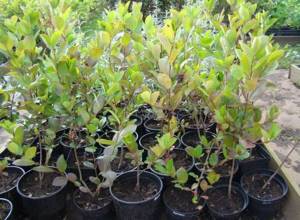
Landing dates
Planting time depends on the availability of planting material and weather. Autumn is beneficial with a large selection of crop varieties, the trees are recently dug up and the root system is strong, prices are much lower than spring prices. A seedling purchased in the fall and planted immediately requires less care, takes root very quickly and easily tolerates low temperatures.
The climate of central Russia allows planting to be carried out from the second ten days of September until the end of October - 20 days before the onset of frost. During this period, there is a gradual transition to a dormant state, and the root system continues to form until the soil temperature drops to -4°C, so the plant approaches winter stronger. After the end of the cold weather, young trees quickly begin to gain green mass and are ahead in development of seedlings planted in the spring.
Reference! If the time for autumn planting is missed, the seedling is placed in a trench (depression), sprinkled with earth and made a shelter of leaves and snow.
In spring, the choice of varieties is much smaller; plantings must be protected from spring return frosts and changeable weather. The plant must be planted before the buds open when the air warms up to +15°C.
How to plant a seedling correctly
In advance, 1-2 months in advance, dig holes measuring 60x60cm and depth 50cm. The prepared soil will have time to acquire the necessary structure, and the applied fertilizers will be transferred into a form convenient for absorption by the roots.
Planting stages:
- prepare a soil mixture from soil taken out of the pit, 2 buckets of rotted manure, 120g of superphosphate, 60g of potassium sulfate or 1 bucket of rotted manure, 2-3 cups of ash, 100g of superphosphate;
- pour a layer of drainage (brick chips, pebbles), taking up approximately 1/5 of the volume, pile soil with fertilizer on top and leave for 1-2 months;
- place the roots on the mound, straighten them, pointing downwards without bending, at the same time insert a peg for the garter;
- planting is carried out to a greater depth than in the nursery, deepening it by 6 cm in light soils, and by 2-3 cm in heavy soils;
- an important condition is to place the neck 1-3 cm below the ground surface;
- cover with earth, shaking the tree to eliminate voids, tie it up;
- water well - the damp soil is compacted, eliminating air pockets;
- shorten the branches after the snow melts until the buds swell, leaving 5 buds on each; when planting in autumn, prune after the snow melts;
- mulch the soil surface with bark and sawdust.
Agricultural technology
Chokeberry reproduces, , and. For mass culture, seed propagation is recommended. Since chokeberry seeds belong to the group of difficult-to-germinate seeds, they are sown in the fall. The seeding depth, depending on the soil, should be 1-1.5 cm. Deeper seeding, especially on heavy soils, reduces soil germination. In the first sunny days of May, abundant shoots of chokeberry appear.
Caring for emerging seedlings involves timely weeding, loosening and regular watering. It is advisable to provide the soil loose and nutritious; grows poorly in marshy, saline and rocky soils. Chokeberry is early-fruiting - bears fruit in the third or fourth year after planting.
Growing and propagating chokeberry
HOW TO PROPAGATE BLACK ROWAN BERRY
Growing chokeberry planting material is not particularly difficult. Chokeberry reproduces well by seeds, layering and suckers, green and lignified cuttings, grafting and dividing the bush.
SEED PROPAGATION
The most common method of propagation is seed. Rowan seedlings retain their parental characteristics and begin bearing fruit in the fourth year.
In order for the seeds to undergo stratification under natural conditions, they need to be sown in the fall. To do this, ripe fruits collected in early September are kneaded and the resulting pulp is washed with water. During this procedure, viable seeds sink to the bottom, and puny seeds float to the surface.
Cleaned and dried seeds are stored for a month. In early October, they are sown in the ground to a depth of 1.0-1.5 cm; if the specified depth is not observed, germination is reduced. The beds are mulched, the top layer of soil is compacted so that there are no voids left around the seeds.
In May, when warm weather sets in, the first shoots appear. Caring for them comes down to watering, weeding, loosening and thinning. When thickening, weak plants develop, so leave two to three centimeters between seedlings in the rows, removing excess, weaker specimens. If there is a lack of planting material, they can be planted in another bed for growing.
Chokeberry seedlings are grown for two years without replanting. When sowing in spring, long-term stratification is needed. Experts recommend carrying it out as follows:• The seeds are soaked in warm water for a day.• Then they are kept for 10 days at a temperature of 12-14 °C.• Then another 10 days - at a temperature not exceeding 3 °C.• In this way, the temperature regime is changed within one and a half to two months. The mucus that appears on the surface of the seeds is removed by rinsing the bags with seeds in warm water. • The remaining time before planting is stored at 0 ° C and only three to four days before sowing is transferred to a warm place.
In spring, the seeds are sown in the ground. Shoots do not appear simultaneously, although the overall germination rate is about 90%.
With proper care on rich soils, the height of one-year-old seedlings reaches 40 cm, on poor soils - 10 cm. Fertilizing carried out in the first half of summer enhances the growth of seedlings.
VEGETATIVE PROPAGATION OF ARONY BERRY
Green and woody cuttings
Green cuttings are harvested in late May - early June. They are planted in greenhouses and rooted at high air humidity, like cuttings of other crops.
If the survival rate of green cuttings is 96-98%, then the survival rate of lignified ones is only 8-30%, so the second method of propagating chokeberry is used much less frequently.
According to experts, seedlings obtained from cuttings are weaker and less productive than plants grown from seeds.
Layerings
This method allows you to quickly obtain a small number of young plants. In early spring, strong side shoots on the mother bushes are bent to the ground, secured in this position, sprinkled with fertile substrate and moistened. In summer they are regularly watered and hilled. New plants are separated from the mother bush in the same fall or left until spring.
Seedlings obtained from root suckers begin to bear fruit the very next year after planting.
We advise you to read: BLACK ROWAN: PLANTING, CARE, GROWING
ROWAN ORDINARY ROWAN, RECIPES FOR WINTER AND DESSERTS
Grafting
Chokeberry grown in standard form looks impressive. To get a compact tree, chokeberry is grafted with a cutting or bud onto a seedling of ordinary red rowan, hawthorn or pear. The grafting can be done at the level of the root collar, into the stem or crown.
APPLICATION IN DESIGN
Propagation of chokeberry is a simple procedure. Every gardener can get enough bushes to reap a good harvest and decorate their plot. After all, chokeberry is not only a valuable fruit plant, but also a highly ornamental plant. It looks great in hedges, in solitary plantings and in groups next to other shrubs, in the foreground of tall trees.
Rowan is resistant to air pollution by smoke and gases. It can be successfully used for landscaping the territory of industrial enterprises.
“Site about plants” www.pro-rasteniya.ru
Return to section
If you found the article interesting, please vote for it using your social network:
Chokeberry seedlings and varieties
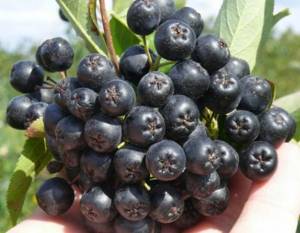
Chokeberry variety "Viking"
There are a large number of varieties of chokeberry, specially created by scientists, but below we list the representatives that are most popular among gardeners:
- Black-eyed;
- Viking;
- Kutno;
- Hakkiya;
- Rubina.
Despite the fact that the differences between these varieties are insignificant, the timing in which the bush bears fruit and the difference in the taste of the berries is present. Based on these characteristics, gardeners give their preference to planting one variety or another.
Of course, the conditions of the region are the main rule for choosing one or another variety of shrub. Consequently, the best seedling will be a daughter one taken from the mother bush. You can also purchase the plant at the nearest nurseries, and then start growing chokeberry.
A seedling that has been growing for 1 or 2 years is suitable for planting. The height of the bush should reach one and a half meters, and the taproots should contain a large number of branches. The normal length of the roots is 25 centimeters.
A stable bush harvest is ensured for thirty years. So, one or two shrubs can provide a whole family with berries in two or three years.
Meaning, application
Main article: Aronia chokeberry recipes
Aronia fruits, containing sugar (6-10%), malic acid (1.3%), other organic acids, pectic (0.75%) and tannin (0.35-0.6%) substances, have valuable medicinal value. carotene, vitamins A, B, B2, C, E, P (rutin, citine), carotene (provitamin A), boron salts, iron, iodine, manganese, copper, molybdenum. Vitamin P (rutin, citine) is found in the greatest quantity - from 1200 to 5000 mg/% per raw substance.
Vigorov L.I. discovered that chokeberry fruits accumulate two to four times more iodine than other garden crops.
Juice from the fruits of chokeberry is used for the prevention and treatment of radiation sickness and rheumatism. 1 g of its fresh berries satisfies the body's daily need for vitamin P; the content of vitamin C is approximately equal to its content in lemon. In addition, consumption of berries helps lower blood pressure, so people suffering from hypertension are recommended to eat 100 g of berries or drink 50 g of juice 3 times a day. They improve brain activity, have a positive effect on the immune system and the activity of gastric enzymes, help with diabetes, sleep disorders, fatigue, and relieve allergic reactions. Most of the biologically active substances are concentrated in the skin. Not only fresh fruits are useful, but also frozen, dried, juice and even processed products such as jam, jelly, preserves, compote. Chokeberry fruits collected in September are well stored fresh at a temperature of about 0° (in the refrigerator or on the balcony). The fermentation process reduces the nutritional value of chokeberry raw materials
Prevention of diseases and pests
One of the important rules on how to plant chokeberry in the spring is to treat the plant from harmful fungi, bacteria and other organisms that can harm the bush and reduce the volume and quality of the fruits that chokeberry produces.
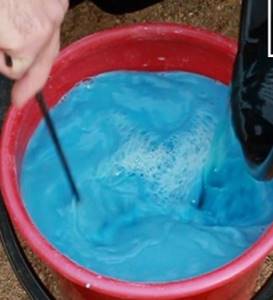
Dilution of Bordeaux mixture
To do this in the spring, when the weather becomes somewhat stable and frosts are not expected, you should treat the bush with fungicides - these solutions help fight fungi and other microorganisms. One of these substances is Bordeaux mixture, ideal for spraying. A one percent solution is suitable for preventive treatment of shrubs.
Rowan is highly resistant to pests, however, if the area is overcrowded with a large number of harmful insects, it will not be able to resist them, and, most likely, will become infected. In such cases, you need to take drastic methods to solve the situation: use special chemicals.
Reproduction of chokeberry chokeberry
Currently, the seed method and green cuttings are used to propagate chokeberry.
Seed propagation. After squeezing the juice, chokeberry pulp with seeds is placed in a container and filled with water. The next day, it is ground, separating the seeds in water (they settle to the bottom of the container). Then they are dried in air at a temperature of 18°, packaged in bags and stored. Before sowing, seeds must be stratified for 90 days. Seeds with sand or peat are poured into a box and placed in a basement with a constant temperature (4-5°). In the spring, during germination, the seeds must be covered with snow 20-30 days before sowing, and kept at a temperature of 18-20° one or two days before.
20 g of seeds are sown in small boxes with humus and peat in a 1:1 ratio, from which 50 seedlings grow; the depth of their embedding is 0.5 cm. When four true leaves appear (after 45 - 50 days), seedlings are planted in a greenhouse. Under one greenhouse frame you can grow 4 thousand seedlings. Sowing is carried out in early April, seedlings are planted in the ground at the end of May. To prevent diseases, especially blackleg, greenhouses are periodically ventilated, and when the outside air temperature reaches 10-12° during the day and at least 1° at night, the greenhouse frames are removed. The optimal temperature for emergence is 14-18°; on the fifth day up to 50% of seedlings appear, on the eighth day - up to 80%.
In the first year, seedlings grow very slowly and require careful care: weeding, fertilizing and watering. In the second year, the seedlings reach 40-50 cm and are suitable for planting. Green cuttings. To root green cuttings, use the current year's growth on branches of different ages. Better rooting is achieved by coppice shoots (it is advisable not to use short shoots for cuttings). The period of chokeberry cuttings is short and coincides with the intensive growth of shoots in length. They are prepared early in the morning and immediately delivered to the cutting site in damp burlap and plastic wrap. Then the shoots are cut into cuttings with a sharp knife. The length of the cutting should be 5-10 cm with two or three internodes and one or two upper leaves. The cuttings are tied into bundles, to which labels are attached and placed in a solution of physiologically active substances (PAS): indolylacetic acid (IAA), heteroauxin and its salts, indolylbutyric acid (IBA) or naphthylacetic acid (NAA). To do this, a sample of one of the active substances is first dissolved in 50-100 ml of hot water, after which water is added. The concentration for IAA is 100 - 150 mg/l, IBA - 25 - 100 and NAA - 15-50 mg/l. The FAS solution is poured in a layer of 2-2.5 cm into flat-bottomed containers (wooden boxes, enamel baths) and the lower ends of the bunches of cuttings are immersed in it for 12-24 hours, while the lower ends should be 2-4 cm deep in the solution. Treated cuttings They are planted in greenhouses, greenhouses, boxes to a depth of 1.5-2 cm. Their rooting occurs under certain conditions related to the composition of the substrate (a mixture of peat and sand - 3:1), humidity, temperature and light. To create the required humidity regime, a fog-forming unit is used, which creates a spray of water at a pressure of 2-4 atm. Sprayers are mounted on the pipeline at a distance of 1 m from one another. Cuttings usually take root on the 12-18th day. In the spring of next year they are dug up and planted for growing in a nursery where seedlings are grown. Chokeberry seedlings must meet the following data.
